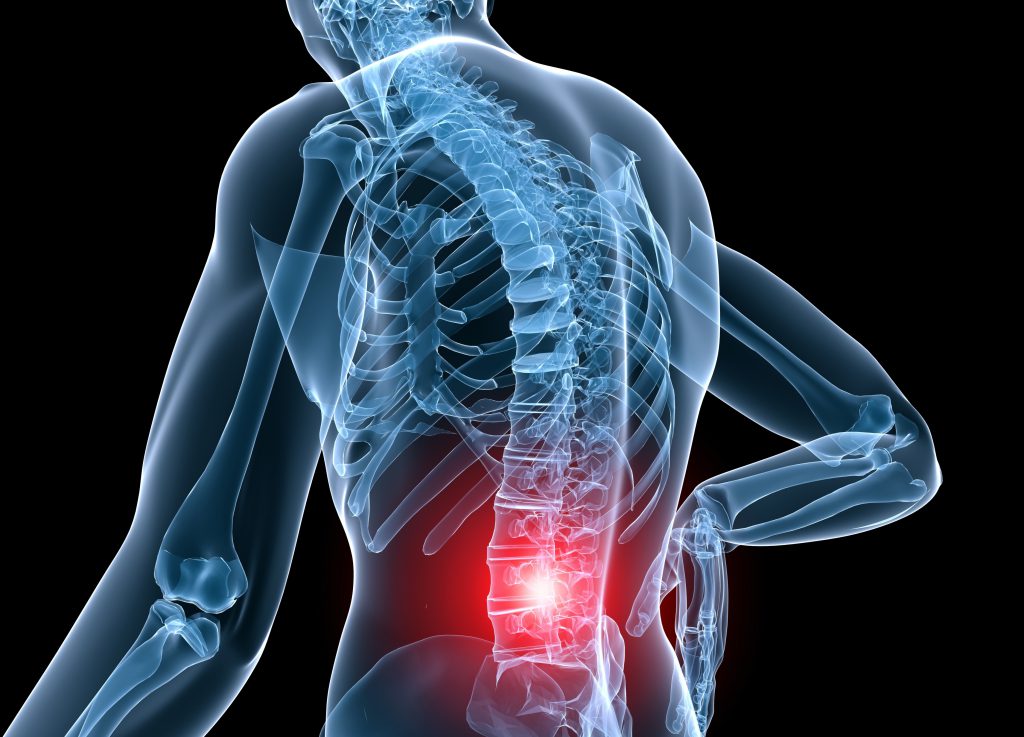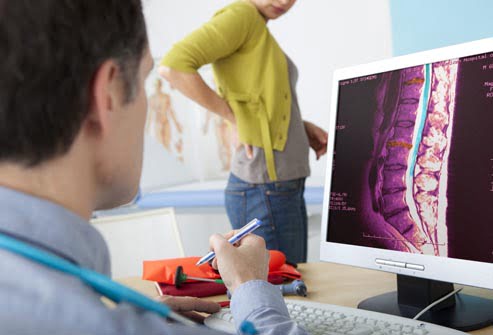BACK PAIN 6 Q’s

Back Pain – 6 Of The Most Common Questions
What causes low back pain?
How do I prevent lower back pain?
What are the low back pain types?
Should I call a back specialist about low back pain?
What are some low back pain treatment options?
When is surgery recommended for lower back pain?
Severe lower back pain may be cause for worry. However, the kind of symptom rather than pain severity is the better indicator. Low back pain is something that 80% of the population have had or will experience at some point in their lifetime. It is one of the most common medical conditions in the world.
Also, it is the leading reason why people visit a doctor and/or stop or change their activities. Low back pain also contributes to lost time at work and limits physical activity that is detrimental to sustaining quality of life. It can also have an enormous impact on your life. Medical research indicates lower back pain to be a leading cause of disability with a wide range of causes, most of which are avoidable.
Incorrectly lifting a heavy load is a quick way to get low back pain. However, most people damage their backs by injuring it a little each day. It surprises people to learn, office workers injure their lower backs more than laborers. Why? The cumulative trauma from sitting too long, bending in the wrong way, and inactivity add up. One day something gives out. Low back bone or tissue damage can occur and pain manifests. It is usually at this point people seek treatment for their lower back pain.
Reducing daily micro back injuries is key to staying active throughout your life. Staying active is pivotal to staying healthy. Keeping a strong and pain free back is a life long pursuit. Unfortunately, there are no replacements. While it’s better to avoid the damage in the first place, good advice and low back pain treatment is better late than never.
Low back pain does not just affect adults. It can affect children and the elderly as well. Further, lower back pain symptoms may return from time to time in many people and sometimes throughout a lifetime. On another note, the population is aging to be older and older. Consider some causes of pain to be related to degenerative disorders. Typical examples would be degenerative disc disease and spinal stenosis. As the population ages more and more, cases of low back pain are expected to increase.
What causes low back pain?
Causes of low back pain can be viewed as being mechanical, organic or idiopathic. In some cases spinal conditions are congenital (at birth). In most others it is acquired, meaning the disorder develops later in life.
- Mechanical causes of lower back symptoms or pain can often be triggered by spinal movement involving spinal structures like facet joints, inter-vertebral discs, vertebrae, ligaments, muscles and/or the soft tissue.
- Organic causes of lower back symptoms or pain can be related to disease, such as space occupying lesions or cancer.
- Idiopathic causes of lower back symptoms or pain refer to an unknown cause.
The following are the most likely possible causes of low back pain. Many back pain problems may involve more than one.
Low Back Pain (Mechanical)
- Herniated disc, disc bulge, degenerative disc disease (DDD)
- Pinched nerves, sciatica or lumbar radiculopathy
- Muscle strains
- Ligament sprains
- Abnormal spinal curvatures: scoliosis, kyphosis, or lordosis
- Spondylolisthesis
- Spinal stenosis
Low Back Pain (Organic)
- Osteoarthritis, spondylitis, rheumatoid arthritis
- Fibromyalgia
- Kidney stones
- Osteoporosis (loss of bone mass causing vertebral fracture)
- Discitis (a bacterial infection in intervertebral disc)
- Compression of the bundle of nerves formed below the spinal cord in the lumbar region known as Cauda equina syndrome
- Benign or cancerous spinal tumors
- Abdominal aortic aneurysm (weakening/enlargement of aortic blood vessel)
- Osteomyelitis (bacterial infection in vertebra)
How do I prevent lower back pain?
At this point, lifestyle changes are the only thing you can do that can help manage or prevent low back pain. Unfortunately you can’t prevent accidents, injuries, stop aging, or change your genetics.
- Avoid sedentary lifestyles and stay active
- Use proper posture and body mechanics
- Improve physical fitness, strong core muscles help support the low back
- Apply ergonomic principles to your work space
- Lose weight; even carrying an extra 10 pounds contributes to lower back pain
- Maintain spinal alignment and health through chiropractic care

What are the low back pain types?
Low back pain types can be categorized as acute, subacute or chronic. Acute low back symptoms or pain typically lasts a few days to as much as 4 weeks. Subacute low back symptoms or pain lasts between 4 to 12 weeks. However, according to medical research roughly 20% of people with acute back pain develop further into chronic back pain. Chronic back pain is understood to be pain that lasts 12 weeks or longer. There are many different treatment options to help relieve pain symptoms, even in chronic cases.
Many people suffering severe low back pain feel a cause to worry. However, severe pain is not always an indicator of a serious condition. Rarely does lower back symptoms or pain require urgent medical attention.
Should I call a back specialist about low back pain?
Many instances of lower back pain can resolve with little to no intervention. However, there are times when you should call a back specialist or seek urgent medical care. Some of these occurrences include when it:
- is the result of an accident, injury, other trauma
- causes loss of bladder or bowel control
- causes weakness, numbness and/or tingling sensations in the legs and/or feet
- is in children
- is severe, constant, or progressively worsening, and/or does not go away
- is interrupting sleep
What are some low back pain treatment options?
Over the years, our Scranton area chiropractors have helped countless people with their lower back pain. We can get results, regardless of the damage already done. We differ with our use of a multitude of therapies ranging from decompression therapy, physiotherapy, and chiropractic treatment. If you have chronic back pain, you probably realize you are in need of real professional help. Our low back pain treatments are specialized around disc herniation and radicular nerve pain. Realize though as our treatments have been successful on complicated cases like these, you would be better off to get treatment as early as possible before complications set in.
If you have long standing back pain or have recently injured yourself, contact us now. It’s very possible to resolve your lower back symptoms or pain quickly and completely. By tackling muscular, nerve and joint issues, we can help you get the most out of your back.
When low back pain occurs many take to their bed or recliner to rest. However, medical research suggests patients who did so actually experienced more pain and slower recoveries than those who modified activities. The better course of care under your doctor’s direction is to remain active and avoid activity that causes or increases your low back symptoms or pain. Staying active while slowly increasing physical limits helps increase circulation needed for healing while simultaneously releasing enkephalins and endorphins (the body’s natural extremely powerful pain killers).
Many people find that brief ten minute intervals of ice therapy is effective during the acute phase (first 2 to 3 days) of lower back pain to reduce inflammation. It’s essential not to place ice or ice packs directly onto skin but wrap in a towel to create a protective barrier. Heat therapy, such as a moist heating pad, may be helpful thereafter. Again, heat should be carefully used in ten minute intervals, not continuously.
Chiropractic manipulative therapy (CMT) and/or Physical therapy (PT) and/or rehabilitation may be recommended and included in patient’s multidisciplinary lower back treatment plan. CMT involves ‘adjustments’ (passive joint mobilization of spinal segment fixations) to improve spinal flexibility, range of motion, and correct posture while PT involves passive and active therapies to help the patient build core muscle strength and teach ergonomic principles. Passive therapies may include ice/heat, massage, flexion distraction, decompression, EMS (electronic muscle stimulation), TENS (transcutaneous electrical nerve stimulation), and ultrasound.
Acupuncture can be another option which involves insertion of fine sterile needles into the body’s meridians associated with lower back symptoms. A meridian is one of 12 Qi pathways (pronounced chee). In traditional Chinese medicine, Qi is recognized as the body’s life force. It is believed that injury and/or disease (among other things) may disrupt the flow of Qi. The acupuncture needles may be twisted and stimulated using low-level electrical current to release naturally occurring endorphins (and other chemicals) that alleviate pain and benefit healing.
Over-the-counter (OTC) nonsteroidal anti-inflammatory drugs (NSAID, such as ibuprofen or naproxen) used during the acute phase may help reduce both low back inflammation and pain. NSAIDs should be used with care as they can cause stomach and gastrointestinal problems and increase risk for heart attack and stroke in some. OTC analgesics or pain medications include acetaminophen. These types of medications are available in prescription strength provided under your family medical doctor’s direction.
Your family medical doctor may also prescribe an anticonvulsant medication (eg, gabapentin, pregabalin) in low doses for low back symptoms or pain that causes radiculopathy, such as leg pain (eg, sciatica), which can lessen the leg pain without the use of narcotics. Prescriptions may also include muscle relaxant variants to help reduce painful muscle spasms, commonly associated with pain.
Epidural steroid injections or nerve blocks may provide short-term pain relief when lower back symptoms cause sciatica (eg, leg pain). Long-term use of has not proven to be beneficial.
When is surgery recommended for lower back pain?
Fortunately in most, surgery is not needed. Most people find noninvasive, nonsurgical treatments. Whether it’s one or a combination of treatments that help relieve and manage low back symptoms including pain.
There are serious indicators to watch for that may suggest surgical intervention. These include bowel and/or bladder dysfunction, vertebral fracture, worsening pain that may be described as unrelenting (eg, disrupts sleep, not relieved with rest), spinal infection, spinal tumor (benign or cancer), or spinal nerve compression causing neurological dysfunction, weakness or loss of function.
While some serious indicators may warrant immediate surgical intervention, most cases are not urgent. Many lumbar spine surgical procedures can be performed in an outpatient surgery center.
